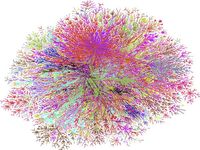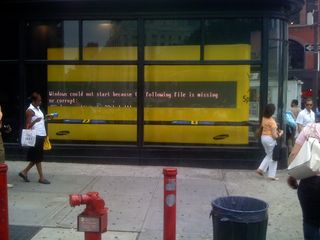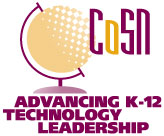 Mobile Monday Amsterdam sloot gisteravond een reeks van 21 gratis toegankelijke ‘mini conferences’ af. Wat in mei van 2007 begon als een netwerkborrel groeide uit tot een reeks zeer interessante bijeenkomsten met sprekers die niet misstaan als keynotes op grote conferenties. Maar dan is het MoMo platform veel toegankelijker (gebleven) door de informaliteit, het pragmatisme in de organisatie en de zeer effectieve RSVP methodiek van inschrijven. De 400 plaatsen in de Duif in Amsterdam werden steeds in twee RSVP rondes vergeven op de ‘meetup pagina’ van MoMo. Klokslag 12:00 twee weken en één week tevoren konden geregistreerde gebruikers op de [I want to join] knop duwen, de laatste MoMo’s was de meetup binnen enkele minuten(!) volgeboekt tot verbijstering van diegenen die even later op de portal keken. Dan weet je in elk geval dat je de scherpste 400 mensen in huis hebt ;-)
Mobile Monday Amsterdam sloot gisteravond een reeks van 21 gratis toegankelijke ‘mini conferences’ af. Wat in mei van 2007 begon als een netwerkborrel groeide uit tot een reeks zeer interessante bijeenkomsten met sprekers die niet misstaan als keynotes op grote conferenties. Maar dan is het MoMo platform veel toegankelijker (gebleven) door de informaliteit, het pragmatisme in de organisatie en de zeer effectieve RSVP methodiek van inschrijven. De 400 plaatsen in de Duif in Amsterdam werden steeds in twee RSVP rondes vergeven op de ‘meetup pagina’ van MoMo. Klokslag 12:00 twee weken en één week tevoren konden geregistreerde gebruikers op de [I want to join] knop duwen, de laatste MoMo’s was de meetup binnen enkele minuten(!) volgeboekt tot verbijstering van diegenen die even later op de portal keken. Dan weet je in elk geval dat je de scherpste 400 mensen in huis hebt ;-)
Krenten in de pap: Internet of Things and Beyond
 Eén van de meest memorabele MoMo’s waar ik aanwezig kon zijn was #15 over ‘Internet of Things and Beyond’. Vaak begint men bij dit onderwerp direct over ijskasten met Internet verbindingen die zelf verse melk bestellen. MoMo meetups kenmerkten zich echter steevast door veel meer verdieping te zoeken.
Eén van de meest memorabele MoMo’s waar ik aanwezig kon zijn was #15 over ‘Internet of Things and Beyond’. Vaak begint men bij dit onderwerp direct over ijskasten met Internet verbindingen die zelf verse melk bestellen. MoMo meetups kenmerkten zich echter steevast door veel meer verdieping te zoeken.
Zo sprak David Orban over de data die sensoren verzamelen en zelf kunnen analyseren en publiceren. Deze sensoren kunnen overal geplaatst zijn maar ze zitten ook in onze smartphones en auto’s. Ze verzamelen zoveel gegevens dat wij als mensen de beperking worden in de verwerking ervan, wij zijn de langzaamste schakel in de IT keten. David stelt dat sensornetwerken de analyses zullen afhandelen en ons de data gebruiksvriendelijk ter beschikking stellen. Daarmee worden we weer onafhankelijker van de technologie die ons nu vaak nog zo in beslag neemt.
En als dat ‘stretching it’ was dan kwam daarna Andrew Hessel, verbonden aan Ray Kurzweils ‘Singularity University’ die over ‘The Internet of living things’ sprak. Hij vergelijkt de logica in computers met het DNA waarmee je bacteriën kunt programmeren om bepaalde functies te vervullen. Met DNA printers kun je deze ‘DNA programma’s’ (nu al) tot levende organismen transformeren. Cool zegt Andrew, fascinerend inderdaad, maar de consequenties gaan mijn brein te buiten in elk geval. Duidelijk werd wel dat informatie technologie ook bij het ‘ontwerp’ en de creatie van levende organismen een versnellende, disruptieve rol speelt. Of dit vooral hoopvol of beangstigend is weet ik nog even niet, beide waarschijnlijk. Eén van de boeiendste sprekers die ik bij MoMo zag.
MoMo #21 Spaces, een waardige afsluiting?
Het antwoord daarop is gelukkig een volmondig ja. Vooral de 3 sprekers na de pauze hadden ijzersterke verhalen met interessante gezichtspunten. Ben Hammersley, voormalig oorlogscorrespondent nu Consultant ‘on the effects of the internet on society, foreign policy, business, and culture’, sprak over de ‘space of possibility’. Hij ziet een kloof tussen de generatie die de opkomende (mobiele) technologie begrijpt en ermee leeft (u en ik?) en de generatie die de wereld probeert te besturen en ten onrechte denkt dat de hiërarchieën die zij construeerden hun grip op de wereld nog niet verloren hebben. Dit terwijl iedereen nu middelen tot zijn/haar beschikking heeft om zonder toestemming wereldwijd te publiceren. En (sociale) netwerken ons in staat stellen om ongekend snel grote groepen mensen te organiseren en mobiliseren. Diverse industrieën en dictaturen hebben deze disruptie inmiddels mogen ervaren. Deze verbreding van het vraagstuk hoe technologie ontwikkeling niet alleen de economie maar ook de mores in de maatschappij, het bestuur en de cultuur beïnvloed vond ik verfrissend. Er zijn eerder technologie revoluties geweest maar de enorme versnelling is nieuw, deze laatste technologie revolutie helpt zijn opvolger te ontwikkelen. Concreter: wie in de technologiesector kan nog aan zijn ouders uitleggen wat zijn of haar baan inhoudt?
 Adam Greenfield, voormalig design directeur bij Nokia en nu gerespecteerd auteur (lees Everyware) en spreker over Urban Landscapes, hield een evenzo boeiend verhaal over de publieke ruimte die een ‘networked city’ wordt met objecten die kunnen waarnemen (met diverse sensoren) en handelen op basis van die waarneming. In hoeverre hebben wij nog controle over de informatie die wordt verzameld en wie dat waarvoor gebruikt, bewaart en inzet voor doelen die initieel nooit zijn aangegeven laat staan geaccordeerd door burgers? Een goed onderbouwd pleidooi voor transparantie en openheid om een leefbare publieke ruimte te behouden.
Adam Greenfield, voormalig design directeur bij Nokia en nu gerespecteerd auteur (lees Everyware) en spreker over Urban Landscapes, hield een evenzo boeiend verhaal over de publieke ruimte die een ‘networked city’ wordt met objecten die kunnen waarnemen (met diverse sensoren) en handelen op basis van die waarneming. In hoeverre hebben wij nog controle over de informatie die wordt verzameld en wie dat waarvoor gebruikt, bewaart en inzet voor doelen die initieel nooit zijn aangegeven laat staan geaccordeerd door burgers? Een goed onderbouwd pleidooi voor transparantie en openheid om een leefbare publieke ruimte te behouden.
Kevin Slavin, mede-oprichter van Starling.tv een social TV platform, sloot af met een nuancering van de run op ‘Augmented Reality’. Onze visuele waarneming is aan zoveel invloeden onderhevig dat er wellicht veel boeiender mogelijkheden zijn dan er domweg beelden overheen leggen.
We hebben de video’s nog…
Het soort verhalen dat ik geprobeerd heb te beschrijven laten zich natuurlijk niet samenvatten in enkele zinnen. Deze en andere interessante presentaties vindt je op mobilemonday.nl of in de podcast. Een laatste tip: kijk in elk geval ook even bij #18 – Data: Mike Kuniavsky, Information is a Material, een hele andere kijk op ubiquitous computing.
Bedankt MoMo, het was erg interessant en op je hoogtepunt stoppen getuigt van grote klasse wat mij betreft.
Mike (Mei/2011)
 2021
2021